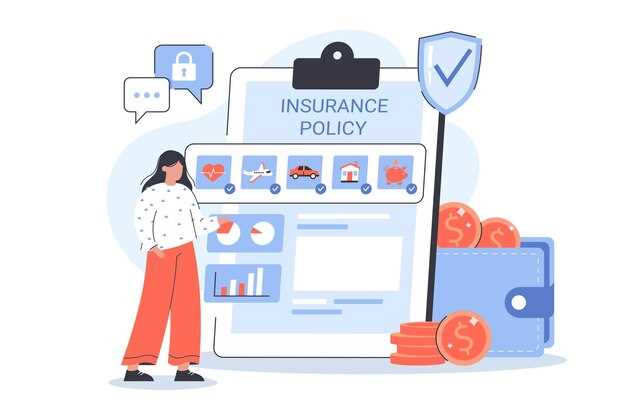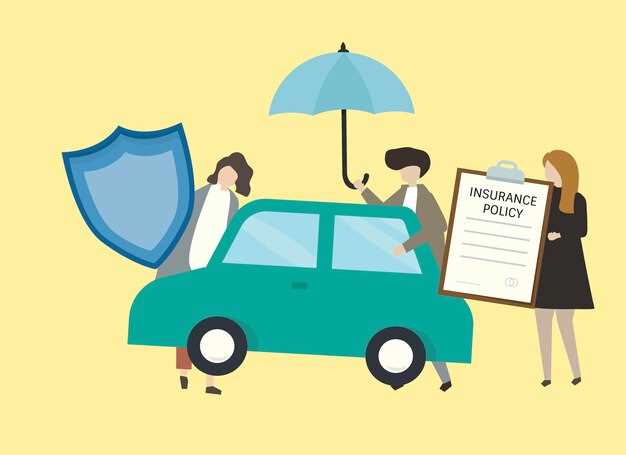
When it comes to protecting your vehicle, understanding full coverage insurance is crucial. Full coverage typically refers to a combination of comprehensive and collision insurance policies that provide a safety net against a wide range of risks. This type of insurance aims to protect not only your vehicle but also your financial well-being in case of unforeseen events.
Comprehensive insurance encompasses protections beyond just collisions. It covers damages caused by natural disasters, theft, vandalism, and other incidents that are not the result of a direct accident. Understanding these benefits allows policyholders to appreciate the breadth of coverage available and to make informed decisions about their insurance needs.
However, it’s important to recognize the limits associated with full coverage insurance. While it offers extensive protection, there are specific exclusions and coverage caps that can affect claims. Knowing these limitations can help individuals navigate the complexities of their policies and ensure they have tailored coverage that meets their unique circumstances.
Evaluating Collision Coverage: What to Know Before You Buy

Collision coverage is a crucial component of auto insurance that helps safeguard your vehicle in the event of an accident. Understanding its benefits and limitations is essential before making a purchase. This type of insurance typically covers damages to your car resulting from a collision with another vehicle or object, regardless of fault. Evaluating the specifics of collision coverage can help you make an informed decision.
First, assess the value of your vehicle. If you own a newer or higher-value car, collision coverage can be beneficial, as repairs or replacements can be costly. On the other hand, if your vehicle is older and of lower value, you might consider whether the cost of collision coverage is justified compared to the potential payout. A thorough appraisal will guide your decision effectively.
Next, analyze your driving habits and environment. If you frequently drive in areas with heavy traffic or poor weather conditions, the likelihood of accidents increases, making collision coverage more essential. Additionally, if you rely on your vehicle for daily commuting, ensuring it is adequately protected can save you from significant financial strain in the event of an accident.
It’s also important to examine your overall insurance policy. Collision coverage often comes with a deductible, which is the amount you must pay out of pocket before insurance kicks in. Evaluate various deductible options. A lower deductible might result in higher premiums but could be advantageous if you anticipate needing to file a claim. Conversely, a higher deductible may reduce your insurance costs but requires readiness for a larger initial payment after an accident.
Finally, check if your collision coverage can be bundled with other types of auto insurance for additional savings. Many insurance companies offer discounts for policyholders who choose to combine multiple coverages, which can make adding collision coverage more affordable. Review your options thoroughly and consult with agents to ensure you are selecting the most beneficial plan for your needs.
Comprehensive Coverage Explained: Protection Against Unforeseen Events
Comprehensive coverage is an essential component of full coverage insurance, offering protection against a variety of unforeseen events that can lead to significant financial loss. Unlike collision coverage, which protects against damages resulting from accidents involving other vehicles or objects, comprehensive coverage takes a broader approach.
This type of coverage addresses a wide array of potential threats to your vehicle, ensuring that you are safeguarded against unexpected circumstances. Below are key aspects of comprehensive coverage:
- Natural Disasters: Comprehensive coverage protects your vehicle against damage caused by natural disasters such as hurricanes, floods, tornadoes, and earthquakes.
- Theft: If your vehicle is stolen, comprehensive coverage will help you recover the value of your car, minimizing your financial loss.
- Vandalism: Acts of vandalism, such as broken windows or graffiti, are covered, allowing for repairs without incurring steep costs.
- Animal Collisions: Accidents involving animals, such as deer or livestock, are often covered under comprehensive policies, alleviating concerns of hefty repair bills.
- Falling Objects: Damage from falling trees, branches, or other debris is typically covered, ensuring that accidental damages are addressed.
While comprehensive coverage provides extensive protection, it is essential to understand its limits. Notably, it does not cover damages arising from collisions with other vehicles or accidents attributable to driver error. Consequently, pairing comprehensive coverage with collision insurance is advisable to ensure complete protection.
In summary, comprehensive coverage guards against a multitude of risks beyond the control of the vehicle owner. This safeguard proves invaluable in maintaining financial stability in the face of unexpected events, making it a wise investment for any vehicle owner.
Key Limitations of Full Coverage: What Isn’t Covered?

While full coverage insurance offers a broad range of protection, it does not encompass every potential risk. One significant limitation is the exclusion of certain types of damages or losses. For instance, full coverage typically focuses on collision and comprehensive coverage, meaning it addresses damages resulting from accidents and non-collision incidents like theft or natural disasters.
However, losses that arise from specific exclusions–such as wear and tear, mechanical failures, or routine maintenance–are not covered under full coverage policies. Additionally, damages caused by intentional acts or driving without a valid license are also typically excluded.
Another critical aspect is the liability coverage, which may be insufficient in some situations. Full coverage might not cover all damages if you exceed your policy limits in an accident, leaving you financially vulnerable to the remaining expenses. Furthermore, certain high-risk activities or modifications to your vehicle may not be covered, leading to potential out-of-pocket expenses.
Moreover, full coverage does not protect you from uninsured or underinsured motorists in some states. Without additional protection or endorsements, you could be at risk of significant financial loss in an accident involving another driver lacking adequate insurance.
Understanding these limitations is essential for policyholders. Ensuring that your coverage aligns with your personal needs and financial situation can help mitigate any potential gaps that full coverage may present.



